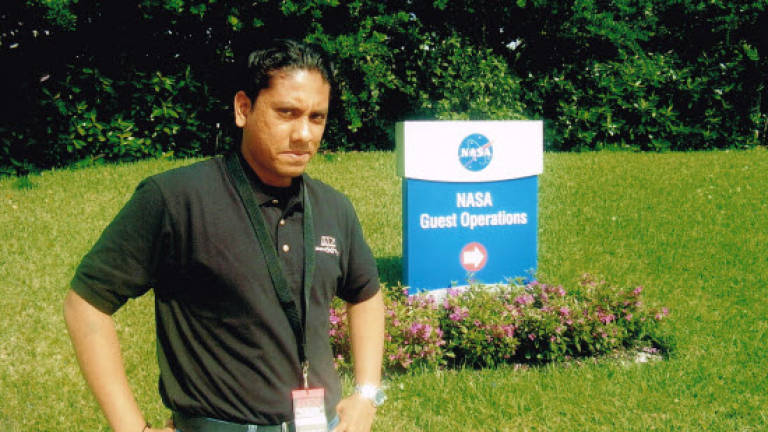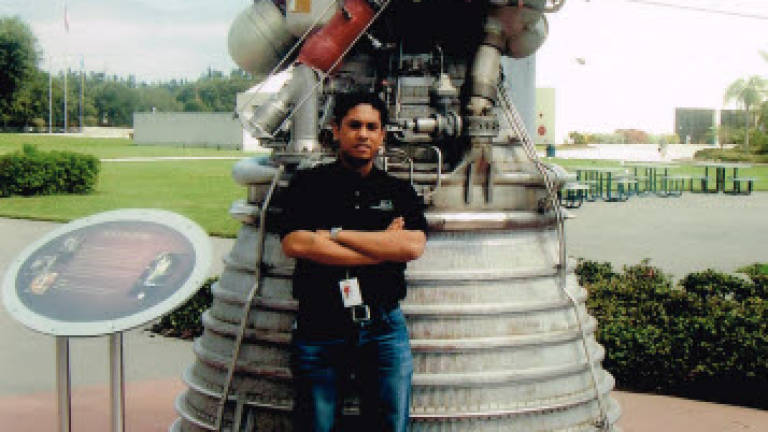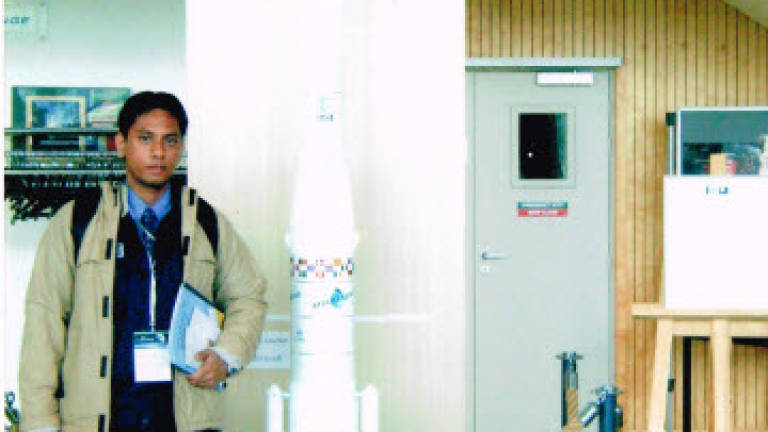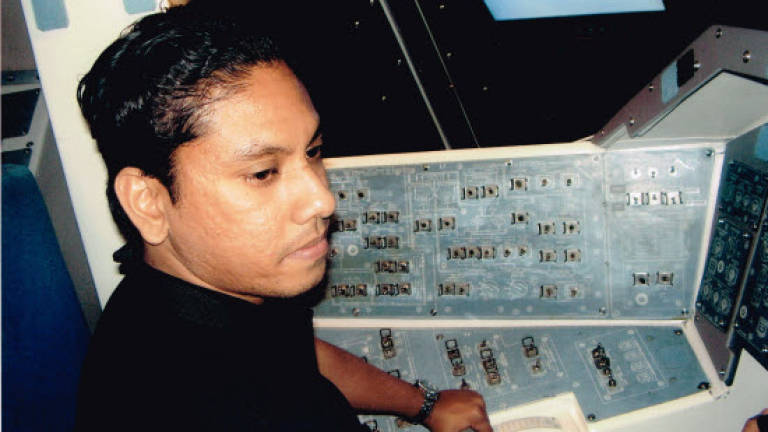Shooting for the stars




IN 2007, the Google Lunar XPrize (GLXP) was launched to challenge engineers, innovators and entrepreneurs worldwide to develop the most effective low-cost methods of robotic space exploration.
More than 8,000 teams took part. Currently, only 16 teams are left. Three teams have secured launch contracts for their craft while the others must secure their own launch contracts by the end of this year to remain in the competition.
Among these 13 teams is the only outfit from Southeast Asia, Malaysian-based Independence X, led by Izmir Yamin.
The team is named after the company that was set up for this project, Independence X Aerospace (IDXA).
In an interview with theSun, Izmir, now in his 30s, tells how his passion for space travel began at age seven when he watched a television programme about a space shuttle launch.
“During that time … I kept asking myself why do they want to go into space?” he recalls.
Going through the encyclopedias at home, Izmir was surprised to learn about the US space shuttle programme’s contribution to the fields of medicine and bio-tech in the form of vaccines and antibiotics.
“The best way to do [such studies is] in a micro-gravity environment and you can’t get micro-gravity on Earth,” he says.
“That was why I decided to do science and maths although I was not very good in those subjects.”
Things came to a head when Izmir joined a state-level physics competition for secondary schools.
While other teams were working on projects like water turbines and monorails, Izmir proposed to his team to build a simple bottle rocket, which was a rare project to undertake back then.
His team won the competition in true underdog fashion. “We did not realise our impact until years later. Now, almost every school has a bottle rocket competition,” Izmir says.
For him, that was the moment his interest in science really took off. Today, he balances his day job as a mechanical engineer with his passion for space travel.
“It is hard for a Malaysian to enter a highly-sensitive industry like space exploration in the US or Europe unless you are a naturalised citizen of that country,” he says.
“The only way to get in is to be highly exceptional, which I am not. I am still trying to get there.”
He adds that IDXA is in the midst of getting funding for the launch of the Independence X rover – a lunar drone spacecraft running on the team’s own Independence-4 engine – in August 2017 by the Indian Space Research Organisation (ISRO)’s Polar Satellite Launch Vehicle.
If all goes well, it will be the first Malaysian spacecraft to be launched through ISRO. As Izmir explains, “[we] developed the technology here [in Malaysia]”.
Almost every component of the craft is built by the team, except for the communication systems. Even the test chambers are built by IDXA.
“We need €23 million (RM106.6 million) for the project,” says Izmir, “€20 million (RM92.7 million) for the launch, and €3 million (RM13.9 million) for logistics and cost of the spacecraft.”
He adds if successful, it will be the cheapest launch programme to the Moon ever. “The cheapest right now is India’s Moon mission Chandrayaan 1 which cost €80 million (RM370.85 million).”
But he laments they are nowhere near the amount and is currently looking for financial backers, and the possibility of crowdfunding.
His roadmap is to continue building spacecraft, right up to Independence 10. “[Hopefully] when we reach Independence 10, it will be launch-ready and provide launch services [for satellites to] disseminate education to rural areas and, at the same time, provide services for corporations.”
He has already come up with a design for Independence 10, which he intends to call the Dedicated Nano Launch Vehicle (DNLV).
This design has already been accepted and published in Nasa’s Small Spacecraft Technology State of the Art Report (December 2015).
For more on the project and GLXP, visit the Independence X website (www.independence-x.com).